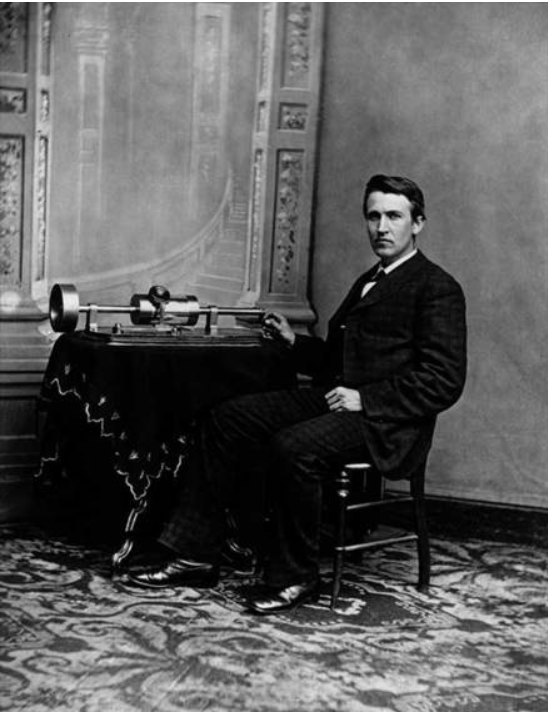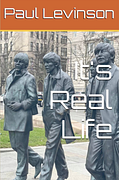
Edison and his first phonograph
Everybody's talking about Paul McCartney's comment in a BBC interview that AI was used in the creation of the "last" Beatles record, based on a demo John Lennon made in the 1970s, and already worked on by the surviving Beatles -- Paul, George, and Ringo -- in the 1990s, when The Beatles released two other Lennon demos they recrafted, "Real Love" and "Free As A Bird". I'm really looking forward to this new record, to be released last this year, but I expect it won't be very much different in production and outcome than any other Beatles recordings released in the past few years, including the beautiful things Peter Jackson did to the Beatles recordings from their 1969 rooftop concert and a little before in Jackson's 2021 documentary, "The Beatles: Get Back."
Let's go back to the history of recording to understand why AI use in these recordings is not such a big deal. If Frank Sinatra hit a bad note, or wanted to change anything in his studio recording of "That Old Black Magic," which would appear on his second studio album, released on Columbia Records in 1947, he would have needed to go back into the studio and record the whole song again. By the 1960s, when The Beatles began recording, that already was not necessary. Splices could easily be made in the recording tape, so the correct note could replace the off-key note, and by the end of the decade and the beginning of the 1970s even that was not necessary. All splicing could be done electronically, and as the number of "tracks" that were used in a recording quickly expanded from 4 to 8 to 16 and more, doing harmony to your own voice became easy and commonplace. None of that was called or even considered to be recordings made by AI. The were recordings made by human beings, using ever more sophisticated technology,
By the 21st century and increasing in the past two decades, digital correction of flat notes via Autotune and production of harmonies without the singer needing to put down another track became ubiquitous in recording. Even in the 1990s, producer Jeff Lynne did all kinds of electronic magic on Lennon's vocals to make them compatible with the new voices Paul and George were putting on "Real Love" and "Free As A Bird". None of that was thought or said to be the least bit worrisome. These developments were just more of the same tech advances which had been foreseen almost since the day Thomas Edison rolled out his first phonograph -- which recorded on tin foil -- back in 1877. He'd intended that to be used as a recording device for the telephone (invented by Alexander Graham Bell a year earlier in 1876) and didn't foresee its mass adoption as a music recording player. But the world soon did, and gave Edison the name of "The Wizard of Menlo Park" (New Jersey, where Edison invented the record player).
History is always worth consulting, and especially useful in putting new developments into perspective. It may be exciting to be concerned about our increasing use of AI in so much that we do, but the Greek chorus of criticism that we hear about every new use of AI these days is misplaced. In reality, it's actually about things that AI does in science fiction, and is itself a kind of science fiction.
I'll sit back and listen to this new Beatles recording with no concern at all, and nothing but pleasure, grateful that Yoko sent cassette recording by John to Paul in the 1980s, and we now have the technology to make it sound fully alive.

No comments:
Post a Comment